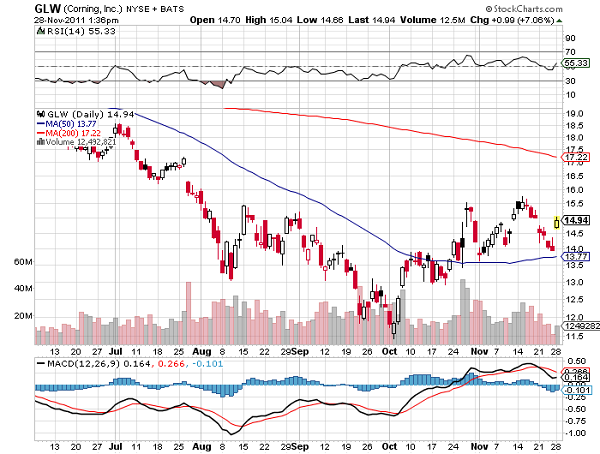Dividend paying companies are in vogue again, with many investors turning to this traditional way of profiting from a security from dividend payments as well as increasing share prices. For many corporations, dividends have never ceased to be a way to pay back profits to its shareholders, while others are turning to dividend payments and dividend increases to lure investors and put a floor on share prices.
While there are a handful of companies that have a half of a century of dividend payments under their belt, it is a growing trend among other companies that have historically been stingy dividend payers to make marked increases to their dividend payments, and this could be a telling indicator as to the true health of a company as well as the direction of a stock’s price.
In addition to these whopping dividend increases – some increased by over 60% – there has even been one company that had raised its annual dividend payment not once but twice in 2011. This is certainly not business as usual for these companies, rather it is a sign that they way companies are choosing to support their share prices in an exceedingly difficult market has changed.
Companies Shift From Buybacks To Dividend Increases To Attract Investors
For the majority of market history, investors have relied on price appreciation to profit in the market. In the current market environment, lasting price appreciation has been a challenge to find, making these dividend increases welcome news for investors.
Some companies have begun to recognize that the traditional route of buying back shares in order to raise share prices, had been infective in today’s market. This could be due in part to investors being weary of buybacks, with the total volume of buybacks in today’s market at its highest level since 2007 – $445 billion.
This increase in corporate share buybacks have served to dull their effect on share prices. As buybacks become more and more common they do not accurately reflect how the company’s management feels about future performance.
Investors are also rightfully becoming skeptical of buyback announcements due to the fact that they can be just that – an announcement. A company is not legally obligated to fulfill their promised buyback amount, and can change their mind if they company were to take a turn for the worse.
Buybacks may also have the added problem of not being the best vehicle to deliver value to shareholders, with the median return on investment for a company engaging in buybacks between 2004 and 2008 being 3%, and a full 75% of these companies delivering a return on investment of less than 10%.
It certainly seems as though these companies would have been better served by either identifying investments in their own business that could return more than 10%, or return the cash to shareholders in the way of paying out a dividend. In a market that has not delivered much in the form of capital gains, dividends have had a justifiable allure, with dividend yields currently beating yields on a 10-year Treasury which are lower than 2%.
Corporations Turn To Dividend Increases To Offset Negative News, Project Positive Growth Outlook
In addition to providing investors with a way to beat Treasury yields, companies have chosen dividend increases in order to combat near-term negative news, and convey the message that the future will not be nearly as grim, and sometimes considerably brighter.

An example of a dividend increase to combat negative news for a company can be found with the dividend increase by technology-based company Corning (GLW). The 50% increase in dividend yield seen by Corning has served to project to investors that the negative news from the fourth quarter concerning a decrease in demand for LCD glass is not expected to be the case in 2012. This has also served to push the stock’s yield up to 2.1%, higher than the yield on 10-year Treasury.
The dividend increase by transportation company Union Pacific (UNP) is also noteworthy because it not only raises the stock’s dividend yield over that of 10-year Treasuries, but is also a sign that future prospects for the company could be highly profitable.
Union Pacific did not only raise its dividend once this year, they raised it twice to 2.52%. Third quarter earnings for the railroad company were up by more than 15% year-to-date, with a 1% increase in total carloads. The company also reported increased volume in four out of its six business groups – chemical, energy, industrial products and autos.
While predicting growth in a company is clearly a matter of opinion, and it is a difficult job to predict the US economy going into 2012, investors should turn their focus to companies that are allowing their dividend increases to speak for themselves.
Comments (No)